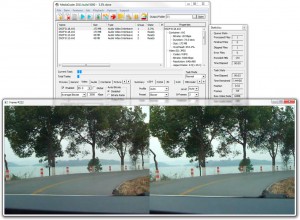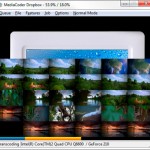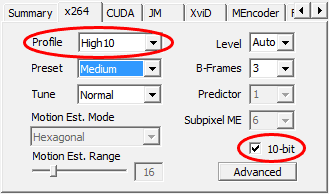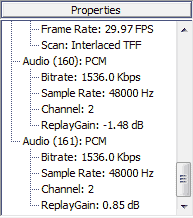After one month’s continuous efforts, I am pleased to announce the release of MediaCoder 2011 RC1. Although this is not yet the final release version of MediaCoder 2011, it has most of the new features and improvements of the new version as well as a new look.
MediaCoder 2011 is almost ready (Stanley posted on January 17th, 2011 )
There is few news on this blog in recent months. But it does not mean that I am not working. After finishing my wedding in December 2010, I have kept working on the next major release of MediaCoder. There are several new exciting features I must mention here before the release.
- MediaCoder Dropbox (the new user customizable simplistic UI)
- Stereoscopic 3D video encoding
- Batch image conversion (supporting major image formats as well as MPO the 3D image format)
- Decoding video into image sequence
- Encoding image squence to video with effects
- Folder watcher feature
- Features for fully automated transcoding
- Improved automatic thumbnail generation
- Image overlay and improved de-logo
- VP8 encoding support
- Viewing live video and statistics of transcoding remotely via web browser (when transcoding from webcam, MediaCoder can be a cam server)
The next release to be versioned as MediaCoder 2011 will hopefully be released before the Chinese new year (early Feb). So stay tuned!
这两个月一直在忙于MediaCoder 2011的开发。新版本会包含很多新特性,在这先透露一些:
- MediaCoder Dropbox (极简新界面,用户可定制)
- 立体3D视频编码
- 批量图片转换(支持各种主流图片格式以及3D图片格式MPO)
- 将视频解码成图片序列
- 将图片序列编码成视频,可加过度效果
- 文件夹监视功能
- 自动化转码功能
- 改进的自动缩略图生成功能
- 图片水印和去水印功能
- VP8编码支持
- 通过浏览器远程查看转码画面和统计数据
如果进展顺利,MediaCoder 2011会在农历新年前发布,请大家保持关注。
Verbatim’s diminutive MediaShare Mini NAS (Stanley posted on November 16th, 2010 )

Verbatim, whose business is memory (and whose name means “to reproduce word for word,” by the way) has done a Rick Moranis job on its MediaShare NAS, resulting in the MediaShare Mini. One third the size of its predecessor, this guy retains its slight stature by going the Iomega iConnect route of eschewing on-board storage altogether for four USB ports (so it looks like you’ll have to factor the four thumb drives into the purchase price). And like the full-size MediaShare NAS server, this bad boy supports remote access via HTTP, support for a number of handhelds (including the iPhone, iPod Touch, iPad, BlackBerry, Android, and Palm Pre), Facebook integration, DLNA-compliant media streaming, and more. Look for it now for an MSRP of $90. Read the rest of this entry >>
MediaCoder updated with x264 10-bit encoding added (Stanley posted on November 8th, 2010 )
Recently x264 has added 10-bit depth encoding and MediaCoder is keeping up with this new feature. In latest build 4777, new options of x264 have been added, including the High10 profile and 10-bit encoding. With 10-bit depth, video quality can be better at the same bitrate than encoding with common 8-bit depth. However, not all players/decoders support 10-bit depth. As far as I know, VLC can handle 10-bit depth.
Besides, MediaCoder is able to feed frames to encoders in color space of I422, YUY2 and RGB as well as common I420/YV12.最新版本的MediaCoder增加了10位色深的H.264编码,相比8传统的8位色深编码,10位色深编码可以在相同码率下带来更好的画质,不过目前只有少数几种播放器支持,VLC是其中之一。
MediaCoder added ReplayGain calculation and 2-pass volume normalization functions (Stanley posted on October 23rd, 2010 )
MediaCoder build 4755 has added two audio volume related features:
- ReplayGain calculation
- Volume normalization with pre-calculated ReplayGain value in 2-pass mode
Encoding And Delivering 3D Video Content (Stanley posted on September 26th, 2010 )
The highest-quality method to encode and deliver a 3D video program is to store and deliver it as a dual-stream synchronized video program, with one full-quality video stream for each eye. This is how Blu-ray 3D works, storing the video for each eye as a full “Blu-ray quality” video program.
The HDMI 1.4 specification provides for 3D stereoscopic video to be delivered in several different ways, including over/under-formatted frames that are 1920 pixels wide and 2205 pixels high. The frame for the left eye and right eye are delivered together, to assure that synchronization is always maintained, even if the signal is momentarily lost and then restored.
Read the rest of this entry >>





